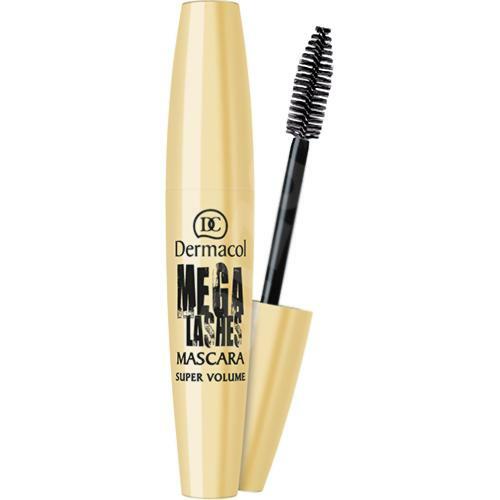We rarely notice that washing dishes takes up to an hour a day. And if it was on the eve of the festival - you can safely cross off half of the personal schedule. For convenience, in some countries, it has long been used embedded dishwashers, but here they are still not widespread.
Content:
- Pros built-in dishwasher
- How does it work
- functions
- How to choose the Integrated dishwasher
- malfunctions
Pros built-in dishwasher

- saving of time
Free time conducted for the things you love or other homework.
- saving water
When hand washing a lot of water flows away in vain. The machine measures the same every time the amount of water required for a given procedure. The last model is washed up to 14 sets spending at the same time from 11 to 13 liters.
- Minimum energy consumption
When replacing physical labor unit takes not so much electricity. The average washing takes 1 kV / h.
- Purity
Dishwashers are connected through the filters, it ensures the longevity of the unit and has a positive effect on the final result. Ware is cleaner, because it is rinsed in filtered liquid.
- Benefits for hands
As the dishes are washed only machine, hands remain unscathed. After all, every woman knows that contact with water for a long time acting on them is not the best way (dry there).
The advantage, from an aesthetic point of view, are built-in models. They will not be evident, but also help to save the workplace, since modern built cars look like a small cupboard under the sink. They are mostly outdoor types.
How does it work

Some people are afraid to buy a dishwasher for the following reason: There is a myth that household appliances such dishes often left dirty and the device can not cope even with mild work.
To dispel this myth, let's deal with the principle of operation of the apparatus in stages:
- You load the dirty cutlery and detergent, select the desired mode, and you can safely go about your business, your help will not be needed until the end of the process.
- After switching on, the unit the first thing is gaining a certain amount of liquid required for washing in the mode selected by you.
- Since the dishwasher is connected to a riser with cold water, the following effect becomes heated. The final temperature does not exceed 90 degrees, depending on the mode you have selected.
- Only after heating, the machine starts to wash. The water mixed with detergent is fed through special nozzles with different pressure in the washing chamber. Jets of hot solution knock dirt and corrode.
- After bathing muddy mixture was discharged into the sewer and tableware watered again, but with clean liquid to wash away the remaining soap means.
- After several rinses it starts drying.
drying the steps of:
- condensation
With this method the cleaning chamber wall cools and the liquid from hot dishes, evaporates, condenses on them, and then flows into the overflow reservoir. This method - one of the most economical, but its use often remain stains.
- forced drying
Pots blown air flow, due to which the water slides. The method is quite energy intensive. However, the divorce rate in this process does not remain. It is considered the most effective.
- Heat exchange
In the upper part of the washing chamber abruptly supplied steam, which collects large drops from dishes, and then removed. Divorce does not remain, but the energy consumption close to the forced drying.
- Only after the drying machine notifies the completion of the audio signal on and off.
All these procedures ensure the purity, and the use of special tools can also be disinfected utensils without harming your own skin. Even in favor of the machines is the fact that many of the restaurants had long since abandoned the hand-washing and willing to use these units.
functions

By default, every dishwasher includes three or four basic functions. Among them, cost, routine and intensive washing, as well as presoaking (for very dirty).
Additionally brands offer options:
- delicate cycle
This kind of additional function is the most common. Commonly used to brittle and glass utensils. Its feature is the temperature which is only 30 degrees, and a reduced pressure.
- delay
The most common feature. It allows you to defer a wash at a certain time, set the timer. This will help you if you have somewhere to go for a long period. Upon your return dishes in the sink will be fresh and not stale.
- Heating
If there is a delay, this function is not so important. She turned on after washing the dishes and warms up to the moment when you open the dishwasher.
- Part load
If your dishwasher is not completely filled, but you probably want to wash the dishes, the program will save water and electricity.
- Bio-prammy
By using special means with the addition of enzymes provide gentle washing machine at low temperatures as thoroughly as in the hot water.
- additional trays
Often attached to the machine pallets, allowing to wash the dishes, which is not installed in standard containers. For example, the oven trays.
- Duo Wash
It translates as a double sink. It allows you to wash two ways simultaneously. Used in full-size and narrow models. Usually in the upper container pressure is weaker, which allows to wash delicate dishes along with the usual.
- Easy-lock
"Closer." If any door, covered with a not fully closed automatically.
- OptoSensor
Dishwashers, having this property can independently adjust the water hardness. More often than models with functional living much longer due to the smaller scale formation.
Just do not forget that the number of features offered depends on the cost. The range depends on the functionality and variety.
How to choose the Integrated dishwasher

dimensions
The first thing you should pay attention when choosing a built-in appliances - its size:
- Full-size
The most capacious. The working volume is approximately the same standard 65 * 65 * 90 cm (width * height * depth).
Plus - capacity. In such a machine was immersed 10 - 15 sets.
By cons include the size of themselves, as the car takes a lot of space. Water consumption in the cheaper models is great.
- narrow
The average size of the ratio, at the same height and depth as the full-length, a width of 45 centimeters, which makes it possible to place them on a more narrow kitchens. They fit a set of sets of 5-10.
Deficiencies in this species there is little, except that the capacity of a little less.
- compact
Incorporated as a small-size cabinet, and no different from the rest. Their sizes can be as low as 45 * 45 * 50 cm.
The advantages include the dimensions, since such a machine can easily be placed in a corner, even a tiny kitchen.
Explicit minus - capacity, which is 3-5 sets.
From this follows the second flaw - a small economy. 2-3 start this machine will take much more water compared to the full length.
economy
Provided 3 types, depending on the amount of liquid needed for one complete wash cycle:
- Highly economical - one wash using 11-16 liters;
- Sredneekonomichnye - 17-20 liters per cycle;
- Uneconomical - up to 26 liters per wash.
It is important to pay attention to the class designation indicated on the machine. They look like 3 letters, written in a row. Indicates a class - saving energy, drying and washing. Marked in Latin letters A, B or C, which is considered the highest index "A".
From this we conclude that that machine is suitable, on which the symbol "AAA". Previously used letters D, E, F and G. Currently producing aggregates data classes it is prohibited because they ceased to comply with European standards.
malfunctions

Increased noise level. This "disease" suffer cheaper models. However, new dishwasher will eventually become noisy. This is caused by clogging of several nozzles. Also sometimes it becomes the cause of a fragment broken plate or glass which, under the pressure of the water hits the wall of the washing cabinet, creating noise.
Dirty liquid can not go to the end of the drain. This is due to several reasons:
- Emerged clog sewageThat does not allow water to escape from the drain pan, causing congestion.
- A clogged filter prevents debris from entering the major factions in the sewer.
- Water intake. Typewriter hardly collects water before the loop, this failure is caused in the float, which determines the amount of liquid necessary for one wash. Another reason - the pressure in the pipeline, which is simply not enough to accelerate the car to a full tank filling.
To prevent problems, remember:
- Wash devices only need funds intended for dishwashers;
- Download the necessary utensils, following the rules specified in the instruction manual;
- It is time to change the filter dishwasher;
- Choose the right mode, otherwise there is a risk to break the fragile dishes.



